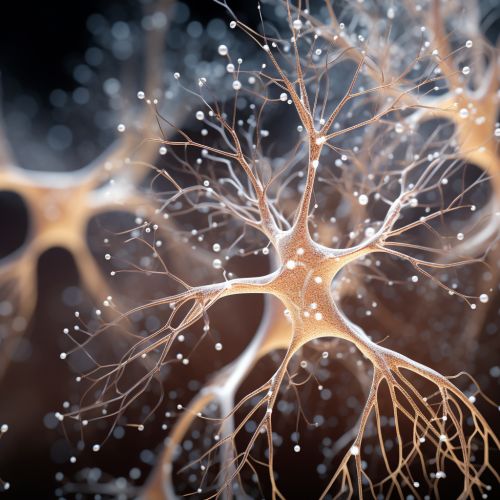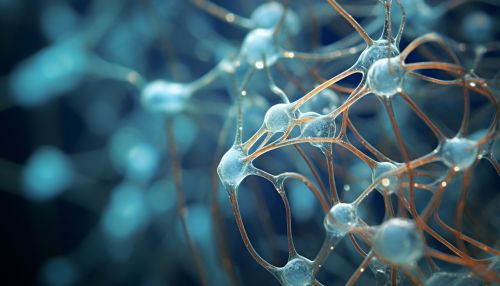Dorsal Root Ganglion
Anatomy and Structure
The dorsal root ganglion (DRG) is a cluster of nerve cell bodies, or neurons, located in the peripheral nervous system (PNS). It is a critical component of the sensory pathway, transmitting sensory information from the periphery to the central nervous system (CNS). Each DRG contains thousands of neurons, each with a unique sensory receptor that responds to a specific type of sensory stimulus. The DRG is located along the spinal cord, with one ganglion associated with each pair of spinal nerves.


The neurons in the DRG are pseudounipolar, meaning they have a single process that splits into two branches. One branch, the peripheral process, extends to the sensory receptor in the periphery. The other branch, the central process, extends into the spinal cord and synapses with neurons in the dorsal horn. The cell bodies of these neurons are located in the DRG, which also contains satellite cells and Schwann cells that provide support and insulation.
Function
The primary function of the DRG is to transmit sensory information from the periphery to the CNS. This includes information about touch, temperature, pain, and body position. The sensory receptors in the periphery detect these stimuli and generate an electrical signal, or action potential, that travels along the peripheral process to the cell body in the DRG. From there, the signal continues along the central process to the spinal cord, where it is transmitted to the brain for interpretation.
The neurons in the DRG are classified based on the type of sensory information they transmit. For example, mechanoreceptors respond to mechanical pressure and vibration, thermoreceptors respond to changes in temperature, nociceptors respond to potentially damaging stimuli that result in pain, and proprioceptors respond to changes in body position.
Clinical Significance
The DRG plays a critical role in the transmission of pain signals, and as such, it has been a target for the treatment of chronic pain. Damage or disease affecting the DRG can result in a variety of sensory disorders, including neuropathic pain, a type of chronic pain that is often difficult to treat.
Neuropathic pain is often associated with damage to the neurons in the DRG. This can result from injury, infection, or disease, such as diabetes or herpes zoster. The damaged neurons can become hyperexcitable, generating spontaneous action potentials that are perceived as pain, even in the absence of a painful stimulus. This is known as spontaneous pain.
In addition to spontaneous pain, individuals with damage to the DRG may also experience allodynia, a condition in which normally non-painful stimuli, such as light touch, are perceived as painful. They may also experience hyperalgesia, an increased sensitivity to painful stimuli.
The DRG has been a target for the treatment of neuropathic pain. One approach is the use of dorsal root ganglion stimulation, a type of neuromodulation therapy that involves delivering electrical pulses to the DRG to modulate the transmission of pain signals. This therapy has shown promise in reducing pain in individuals with chronic pain conditions that are refractory to other treatments.
